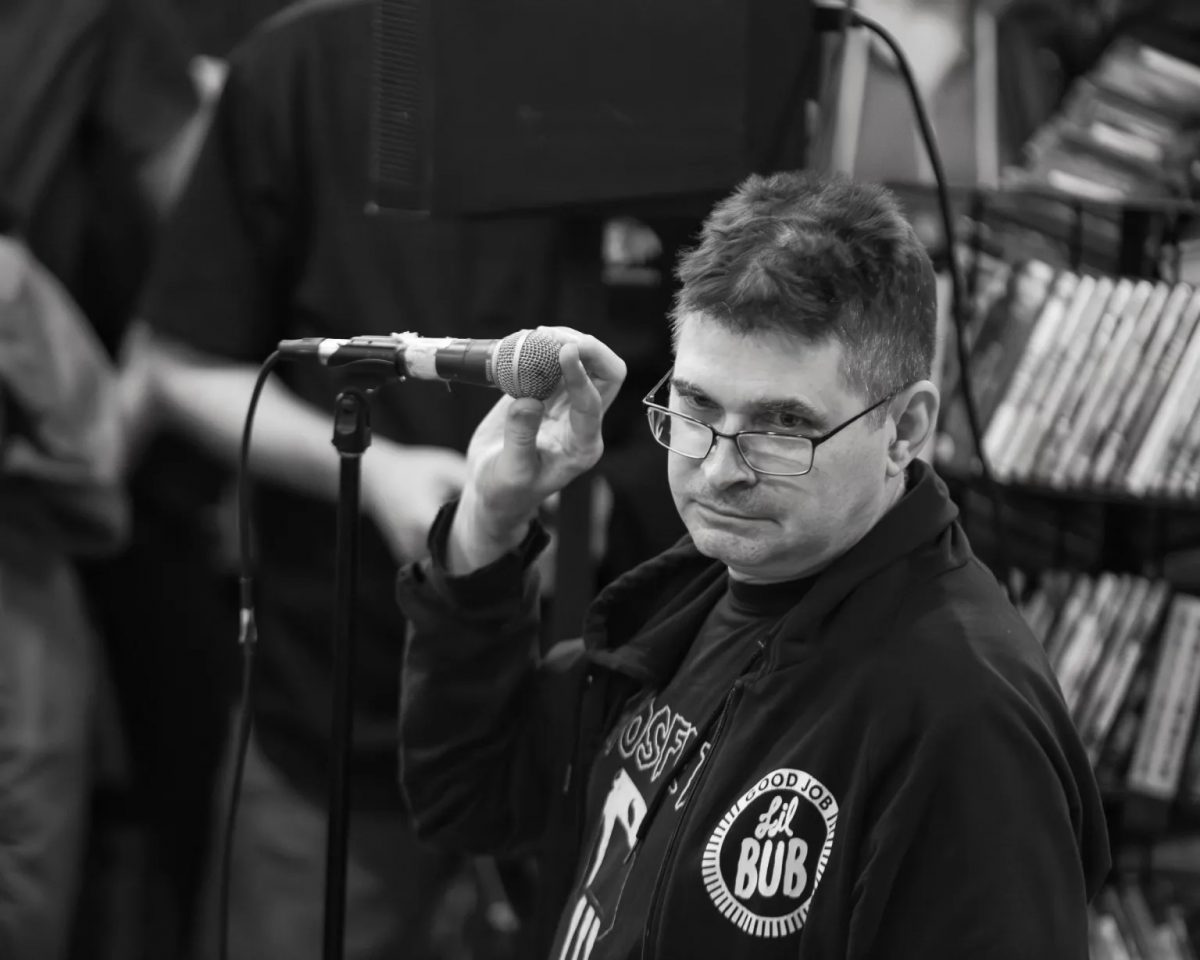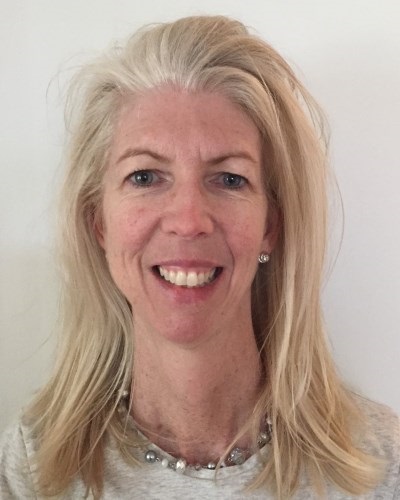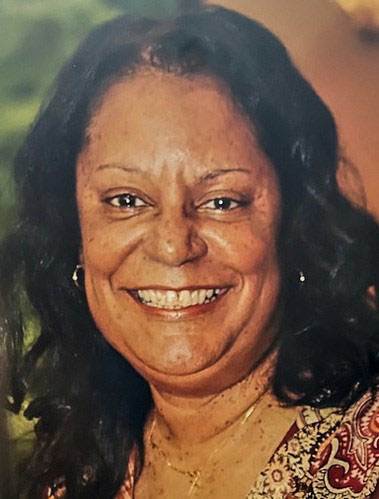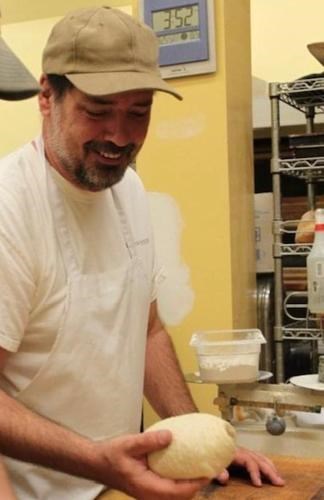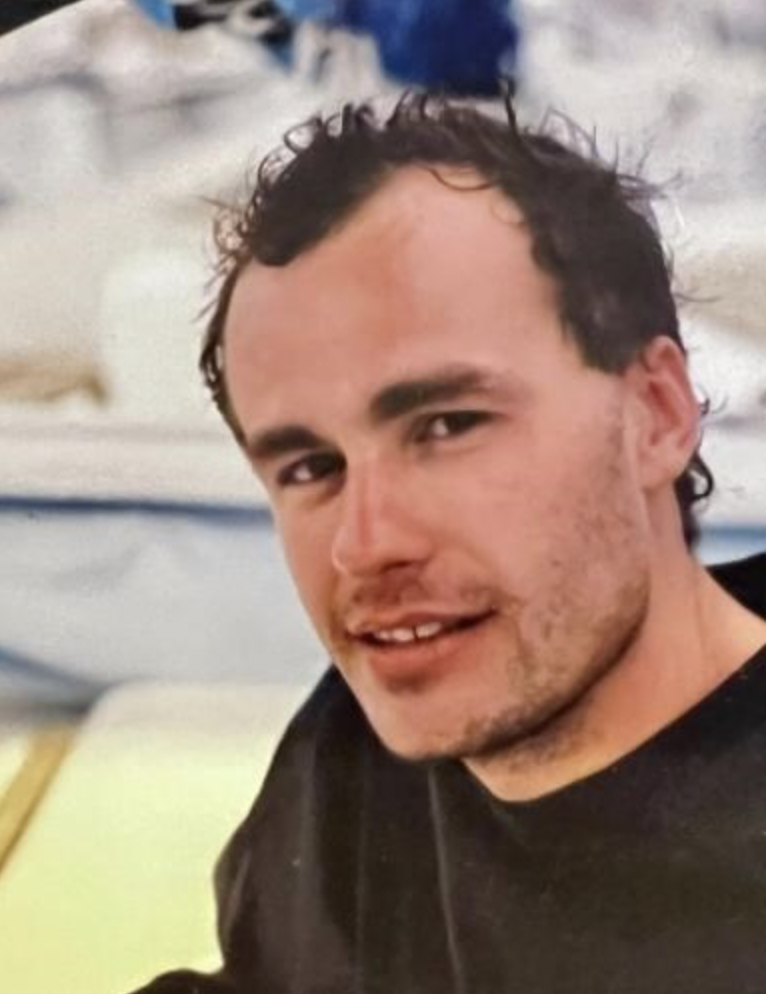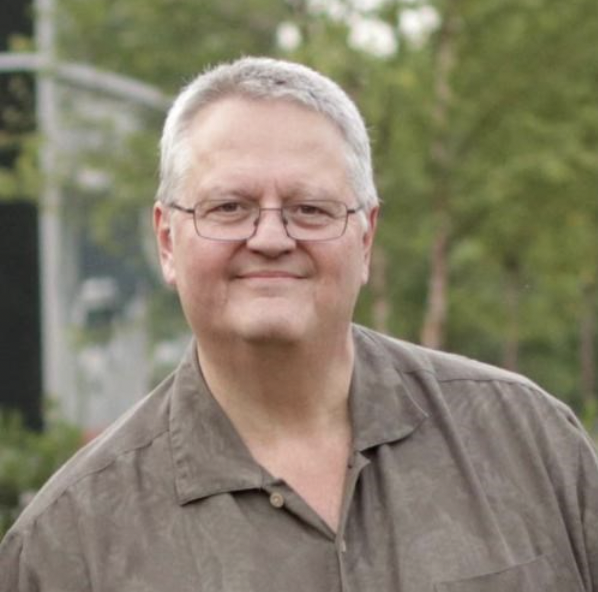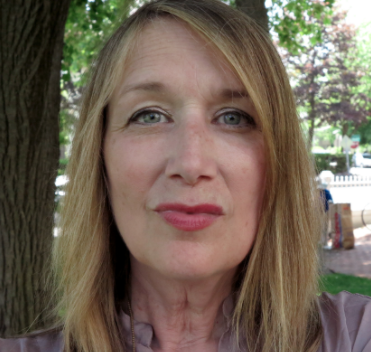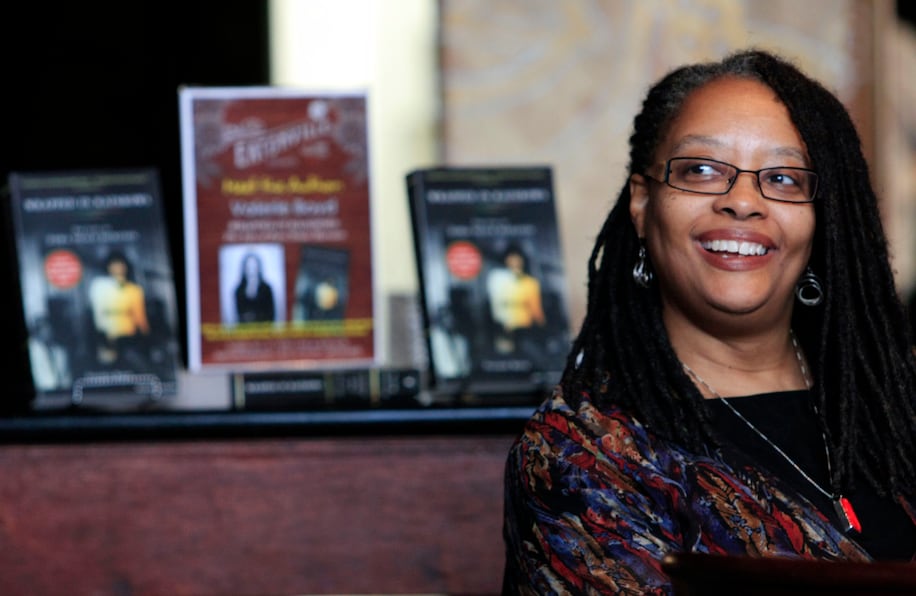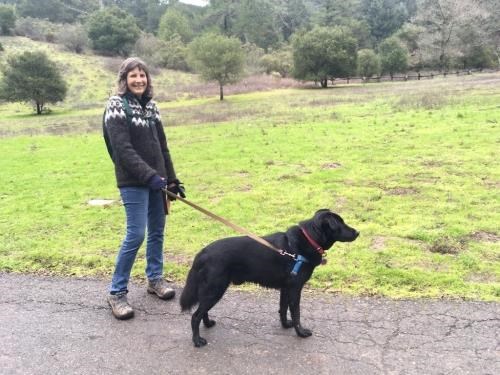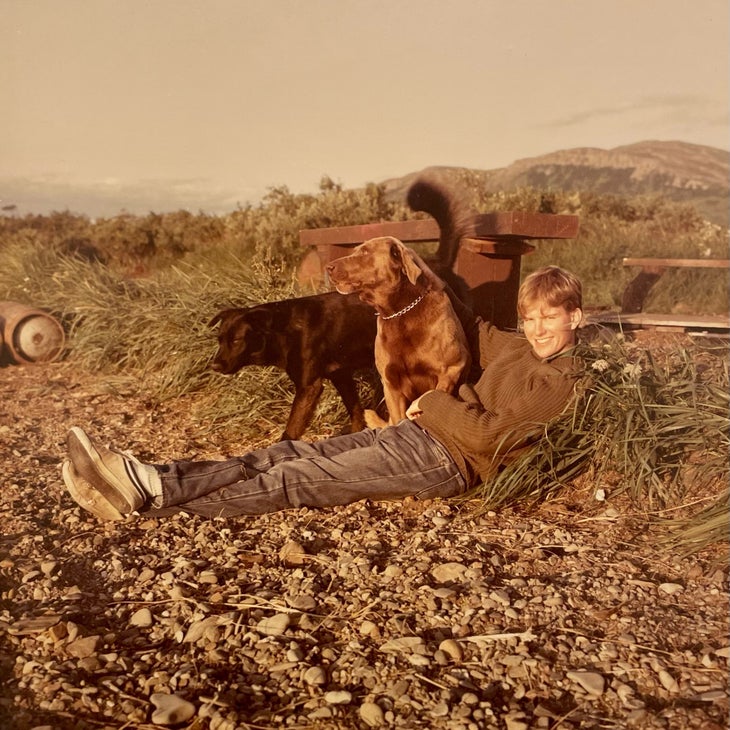Reprinted from Pitchfork.com
Photo credit: Casey Mitchell
Steve Albini, an icon of indie rock as both a producer and performer, died on Tuesday, May 7, of a heart attack, staff at his recording studio, Electrical Audio, confirmed to Pitchfork. As well as fronting underground rock lynchpins including Shellac and Big Black, Albini was a legend of the recording studio, though he preferred the term “engineer” to “producer.” He recorded Nirvana’s In Utero, Pixies’ Surfer Rosa, PJ Harvey’s Rid of Me, and countless more classic albums, and remained an outspoken critic of exploitative music industry practices until his final years. Shellac were preparing to tour their first album in a decade, To All Trains, which is scheduled for release next week. Steve Albini was 61 years old.
Despite his insistence that he would work with any artist who paid his fee, Albini’s catalog as a self-described audio engineer encompasses a swath of alternative rock that is practically a genre unto itself. After early work on Surfer Rosa, Slint’s Tweez, and the Breeders’ Pod, he became synonymous with brutal, live-sounding analog production that carried palpable raw energy. His unparalleled résumé in the late 1980s and 1990s includes the Jesus Lizard’s influential early albums, the Wedding Present’s Seamonsters, Brainiac’s Hissing Prigs in Static Couture, and records by Low, Dirty Three, Helmet, Boss Hog, Jon Spencer Blues Explosion, Hum, Superchunk, and dozens more. His influence rang through to the next generations of rock, punk, and metal at home and abroad, many of whom he went on to produce—the likes of Mogwai, Mclusky, Cloud Nothings, Mono, Ty Segall, and Sunn O))). He also recorded enduring greats of the singer-songwriter canon: Joanna Newsom’s Ys, Nina Nastasia’s early records, and much of the Jason Molina catalog among them.
Albini was born in Pasadena, California, and lived a peripatetic childhood before his family settled in Missoula, Montana. As a teenager, his discovery of Ramones transformed what he described, to Jeremy Gordon for The Guardian, as a “normal Montana childhood” into an altogether wilder entity. In the subsequent years, while studying journalism in Illinois, he was drawn into the Chicago punk scene that his music would come to both defy and define. Albini spent his days at the record store Wax Trax, buying every record that “looked interesting” and talking to “everybody with a funny haircut,” he told NPR.
“It was an extremely active, very fertile scene where everybody was participating on every level,” Albini said of Chicago’s music scene. “The community that I joined when I came to Chicago enabled me to continue on with a life in music. I didn’t do this by myself. I did this as a participant in a scene, in a community, in a culture, and when I see somebody extracting from that rather than participating in it as a peer, it makes me think less of that person.… My participation in all of this is going to come to an end at some point. The only thing that I can say for myself is that, along the way, it was a cool thing that I participated in, and on the way out, I want to make sure that I don’t take it with me.”
He began recording as Big Black in the early 1980s, channeling antisocial, sometimes violent themes through buzzsaw riffs and histrionic barks, grunts, and whelps, at first backed only by a drum machine (which remained a constant, pounding presence) and soon joined by Naked Raygun’s Jeff Pezzati and Santiago Durango; Dave Riley replaced Pezzati on bass for the band’s two landmark studio albums, Atomizer and Songs About Fucking. In his spare time, Albini would pen screeds in the 1980s zine Matter, admonishing bands in neighboring scenes and cementing the firebrand reputation that established him as an eminent rock grouch and refusenik.
After Big Black, Albini formed the short-lived Rapeman—a name he came to regret, despite the sardonic intent—before founding Shellac in the early 1990s, with Bob Weston and Todd Trainer. After a string of EPs through his longtime home of Touch and Go and Drag City, the band extensively toured (including an all-but-residency at Primavera Sound, the only music festival Albini was happy to play) and released five beloved albums: 1994’s At Action Park, 1998’s Terraform, 2000’s 1000 Hurts, 2007’s Excellent Italian Greyhound, and 2014’s Dude Incredible.
Albini has long been admired for sticking to his principles and questioning music industry standards, especially in the recording studio. He never took royalties from records on which he worked—including Nirvana’s In Utero, which has sold over 15 million copies—despite that being industry custom, and he kept his day rates low, especially for a producer with his pedigree. At Electrical Audio, his recording studio where he and staff members helped lay bricks in the construction process, Albini was famous for handing artists a yellow legal pad on the first day and instructing them to map out a written description of every song they were going to record. This was his way of avoiding future miscommunications and guaranteeing that artists maximized the in-studio time for which they paid. “The recording part is the part that matters to me—that I’m making a document that records a piece of our culture, the life’s work of the musicians that are hiring me,” he told The Guardian. “I take that part very seriously. I want the music to outlive all of us.”
Several bands have recounted experiences when Albini was behind the board reading a book or playing Scrabble during their recording sessions. As Albini explained it, this method helped keep his senses sharp and widened his perspective. “When I first started making records I would sit in front of the console concentrating on the music every second. I found out the hard way that I tended to fiddle with things unnecessarily and records ended up sounding tweaked and weird. I developed a couple of techniques to avoid this,” he explained in a Reddit AMA. “This has proven to be a really good threshold, so that if anything sounds weird or someone says something you immediately give it your full attention and your concentration hasn’t been ruined by staring at the speakers and straining all day.”
Throughout his career, Albini courted controversy through provocative band names (Rapeman, Run N***er Run), song titles ( “Pray I Don’t Kill You F***ot,” “My Black Ass”), and offhand statements (“I want to strangle Odd Future”). While he refused to apologize for his choice in names and jokes, in Michael Azerrad’s 2001 book Our Band Could Be Your Life, Albini made it clear that he believed his real stances on race, gender, LGBTQ rights, and politics were obvious. “I have less respect for the man who bullies his girlfriend and calls her ‘Ms’ than a guy who treats women reasonably and respectfully and calls them ‘Yo! Bitch,’” Albini told Azerrad. “The point of all this is to change the way you live your life, not the way you speak.”
Later in life, however, Albini repeatedly apologized for his past controversies, realizing that intent and moral clarity went only so far. “A lot of things I said and did from an ignorant position of comfort and privilege are clearly awful and I regret them. It’s nobody’s obligation to overlook that, and I do feel an obligation to redeem myself,” Albini wrote on X in 2021. “If anything, we were trying to underscore the banality, the everyday nonchalance toward our common history with the atrocious, all while laboring under the tacit *mistaken* notion that things were getting better. I’m overdue for a conversation about my role in inspiring ‘edgelord’ shit. Believe me, I’ve met my share of punishers at gigs and I sympathize with anybody who isn’t me but still had to suffer them.” He talked in depth about his regrets with The Guardian, MEL Magazine, and others.
Amid all of his ongoing work, Albini was a remarkable poker player. In 2022, he won a World Series of Poker gold bracelet after beating 773 other players in the $1,500 entry H.O.R.S.E. competition for a huge prize of $196,089. While most players dressed in button-up shirts and plain tees, Albini wore a furry, white hat shaped like a bear and a red Jack O’ Nuts shirt, saying the Athens noise-rock musicians “bring me luck.” He won another WSOP gold bracelet in 2018 for beating 310 players in seven card stud to the tune of $105,629. Back then, he was wearing a Cocaine Piss shirt during the big win. He had a massive grin on his face in the photos documenting both wins.
When asked how his career would be regarded if he ever retired, Albini told The Guardian, “I don’t give a shit. I’m doing it, and that’s what matters to me—the fact that I get to keep doing it. That’s the whole basis of it. I was doing it yesterday, and I’m gonna do it tomorrow, and I’m gonna carry on doing it.”
